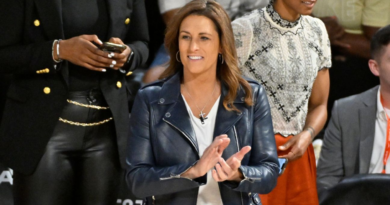MLS implements relaxed roster rules ahead of WC
MLS announced the official implementation of several changes to its roster rules Thursday that are intended to provide teams more flexibility in how rosters are constructed.
Among the changes approved, some of which were previously reported by ESPN, include a relaxing of restrictions on the combined number of Designated Players and under-22 signings.
Previously, teams that had three overage Designated Players could only have one U22 signing. Teams with two overage Designated Players, could have as many as three U22 signings.
Now teams can choose one of two paths. The first path allows teams to sign three Designated Players and three U22 signings. The second path allows teams to have two DPs and four U22 signings plus an additional $2 million in General Allocation Money.
Teams have to select which path they are going to take this year (3PDs/3 U22s) vs. (2DPs/4 U22s + 2m in GAM) by the end of the summer transfer window which is on Aug. 14. In subsequent years, these paths must be chosen by teams at the beginning of every season, with no alterations in the middle of a campaign.
The changes went into effect with the opening of the summer transfer window Thursday.
“The new roster rules open the door for clubs to sign additional world-class players and more emerging stars, while also providing a great deal of flexibility to invest across the roster,” Todd Durbin, MLS executive vice president for player strategy and relations, said.
“We have a unique opportunity with the World Cup coming in two years. These modifications, along with others being discussed for potential implementation in 2025 and beyond, will elevate our league and increase fan engagement around the world.”
Designated Players allow teams to sign players whose total compensation and transfer fee surpass the maximum budget charge.
For 2024, that amount is $683,750. A U22 signing is similar, but requires the player be 22 years old or younger in the first year he is eligible to play in an MLS game. If the player is under 20 years of age, the budget hit is $150,000 while if the player is older they will incur a budget charge of $200,000. The transfer fee for a U22 player also doesn’t impact the salary budget.
Another change that was announced is the increasing of the amount of General Allocation Money (GAM) teams receive when players are transferred out of the league. Teams now get to keep $3m over the course of the season. Previously, teams kept $1.2m per transaction, which punished teams if they had one or two large outbound transfers.
The MLS Players Association had to agree to the proposed changes. One change that was previously reported that didn’t go through was increasing the number of allowed contract buyouts per season to two. Currently, teams are allowed one contract buyout per year, which removes a player’s hit to the salary budget, though financially MLS is on the hook to keep paying the player’s salary. There had been some pushback from some Chief Soccer Officers that the proposal rewarded teams for making mistakes.
With the United States co-hosting the 2026 World Cup with Canada and Mexico, as well as Lionel Messi‘s contract ending at the end of 2025, MLS has been facing increasing calls to open up its collective pocket book in a bid to increase the level of play on the field.
The coming months will reveal just how effective these changes will be.
Of the three major changes, the modification involving the number of Designated Players and U22 signings is the most significant. The change is expected to benefit a team like Inter Miami, which has been arguably the most aggressive organization in terms of signing DPs and U22s, and has been juggling those designations in order to become salary budget compliant.




